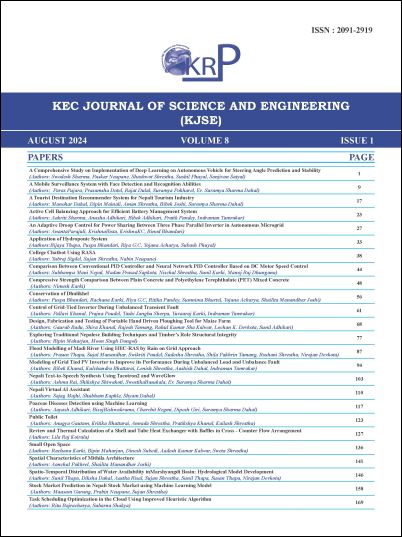Spatio-Temporal Distribution of Water Availability in Marshyangdi Basin: Hydrological Model Development
DOI:
https://doi.org/10.3126/kjse.v8i1.69286Keywords:
Marshyangdi Basin, Hydrology, SWAT, Sufi-2, Water balanceAbstract
This Study has developed a hydrological model for the Marshyangdi river basin in Western Nepal, showing considerable potential for developing water resources and overall national prosperity. The model is also used to characterise hydrology and assess the availability of water resources across different spatial and temporal dimensions, hence improving our comprehension of water availability and its possible applications. The newly developed hydrological model in the Soil and Water Assessment Tool (SWAT) replicates the mean flows, hydrological pattern, and flow duration curve at the basin and 54 sub-basin outputs. Additionally, the model undergoes calibration and validation, employing Sufi-2 to fine-tune hydrological parameters. Based on the data generated by the model, the annual average precipitation (P) in the Marshyangdi basin is projected to be 1843 mm. Approximately 17.88% of the average yearly rainfall is lost via evapotranspiration; however, this varies significantly across different locations and time periods. Contrasting the two, the mountains have a higher moisture level than the Himalayan regions. The predicted average annual flow volume at the basin outflow is 9467.423 million cubic metres (MCM). Examining water shortages, finding regions with excess water, and developing solutions to address the competing needs of agriculture, industry, urban areas, and ecosystems are advantageous. Therefore, this method may improve the effectiveness of strategic planning and the long-term management of water resources.




